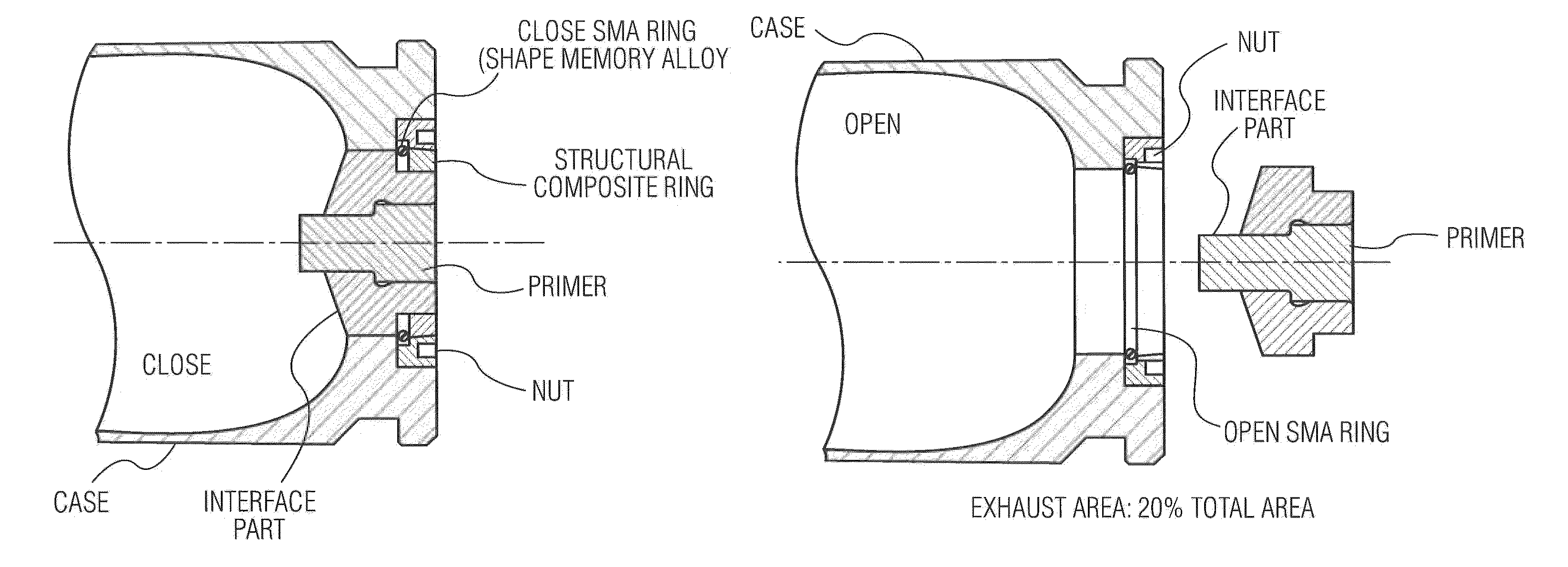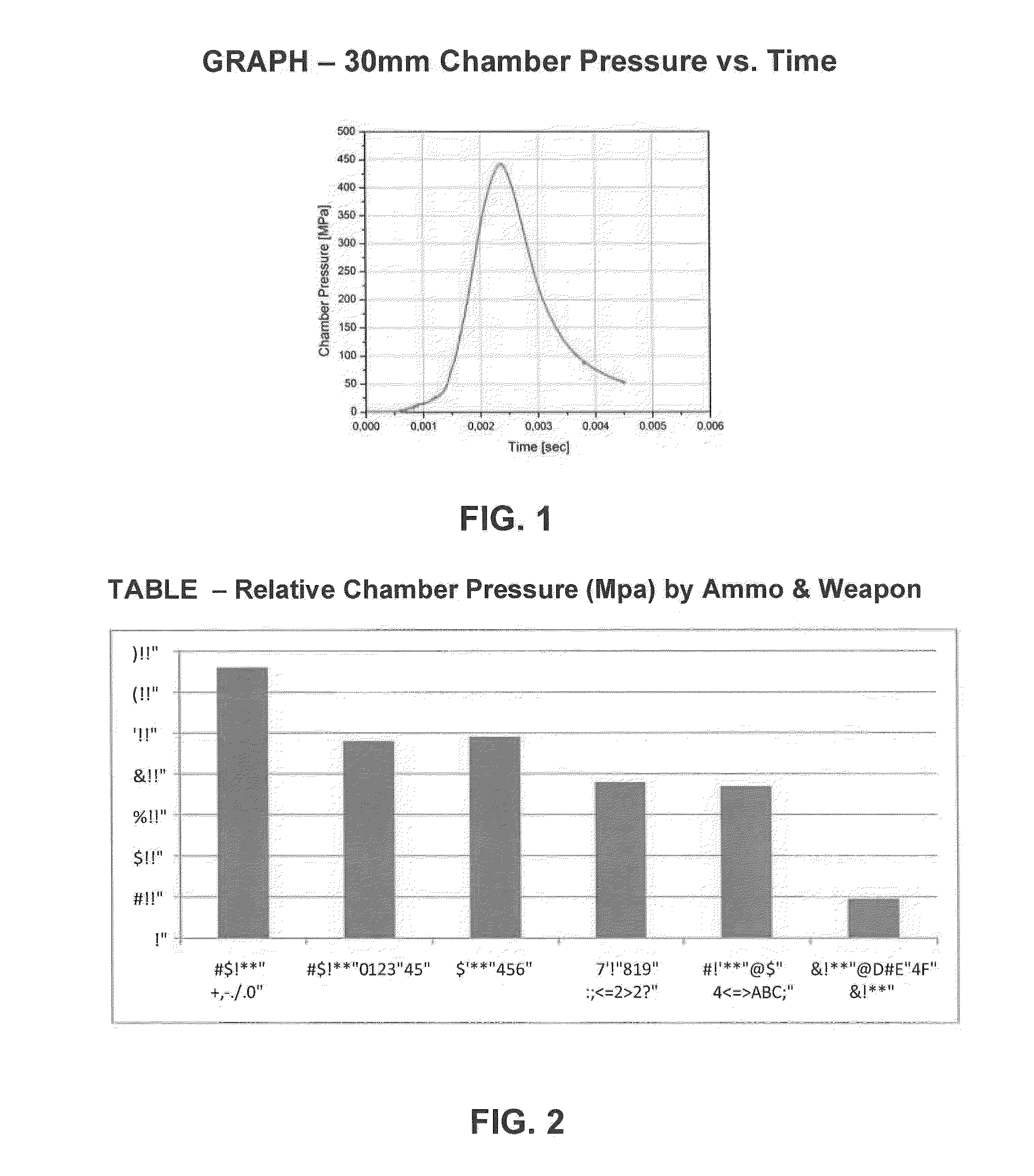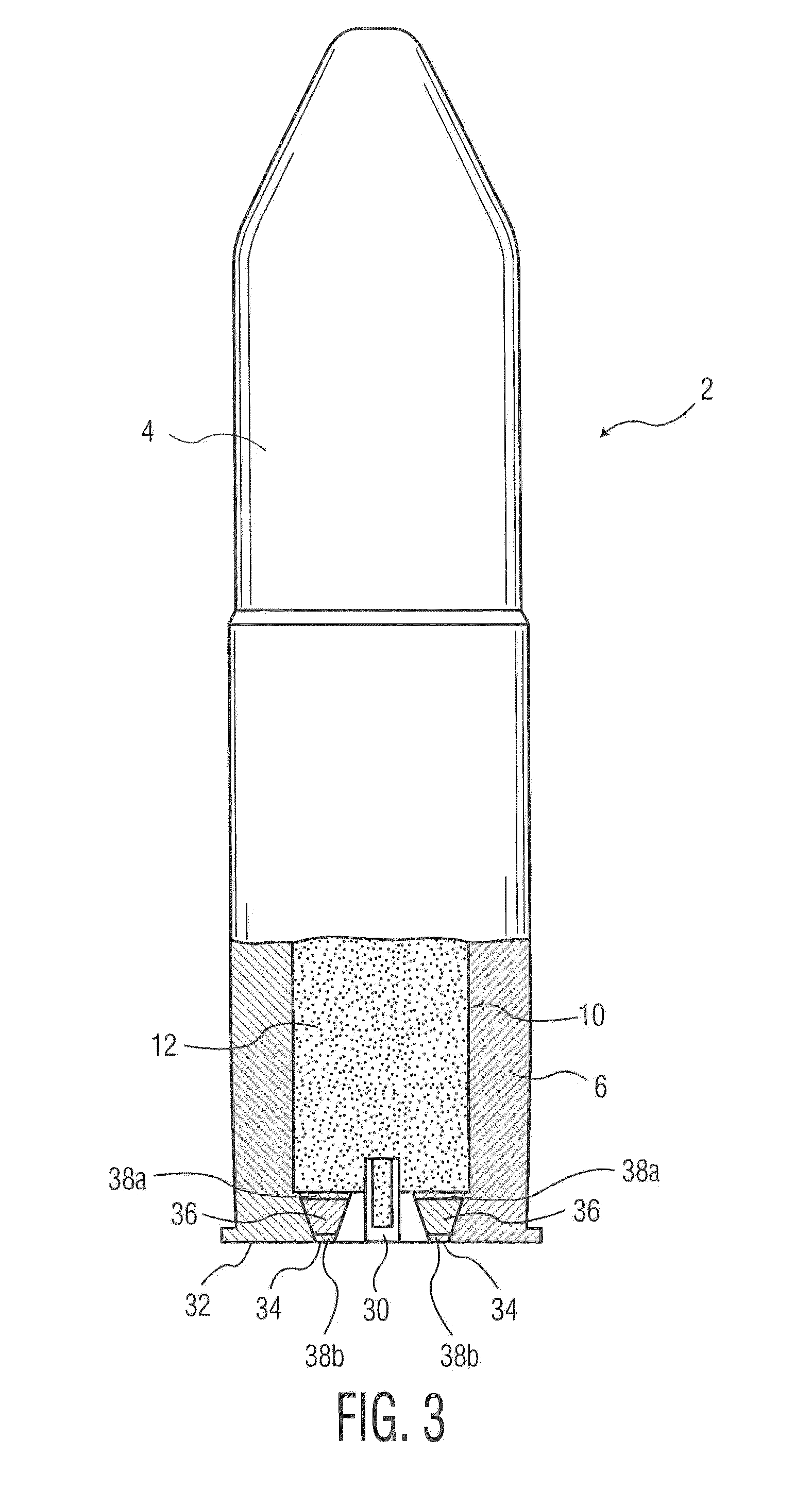None of the disclosed solutions provides both (1) venting projectile cartridge cases in a way that serves as (2) a sound solution that is
usable across a spectrum of automatic cannons and weapons.
Nevertheless, in most automatic weapons and cannons a naked melting plug (as a method for creating a vent) does not provide:(1) adequate
structural integrity to the cartridge case.
Conversely, when a cartridge with the IM vent described herein is heated in an unsupported situation (not in a breach or held by a bolt), the IM vents will burst as intended as the liquefied
metal or
polymer will not be compressed against the
metal surface of a weapon and the unsupported
bursting plug lacks the
structural integrity to contain the
propellant burn.
There are significant differences in the design integrity of weapons chambers and breaches.
The disintegration of materials could create hazardous edges and surfaces.
Therefore, the MK19's cartridge case requires greater structural integrity for firing than the MK47 as the cartridge case is not fully chambered at the time of primer ignition.
When considering IM ammunition solutions for ammunition fired from automatic weapons and cannons, the Haeselich design, as disclosed in the aforementioned U.S. Pat. No. 7,107,909, is inadequate.
The design is not robust enough in providing structural integrity to function from automatic weapons and cannons.
Weapons such as the .50 cal
Browning and certain
artillery types have cook-off dangers where hot barrels rapidly transfer heat to their cartridge cases.
Some weapons also have slow rates of fire with extensive dwell times in a chamber.
It is also beneficial (in terms of IM effect) to the extent practicable to use the primer to energetically open the vent, thereby contributing to inadequate containment and inefficient propellant burn.
Failure of an IM
plug in a chamber may result in
erosion and will certainly foul the weapon's breach.
For a metallic melting plug configuration, the prior art does not provide for adequate structural integrity to undergo extraction and ejection (without the raw melting plug material from oozing from the cartridge case
fouling the feeding mechanisms).
Post-firing induction of heat into a cartridge case may cause the IM plugs to disintegrate (melt) and foul a weapon.
The
liquefaction of the IM plug material results in a loss of structural integrity that is critical in some breach mechanisms.
In some cases, chambering into a hot breach may result in
liquefaction of the fusible material in an IM plug; in this event, the
bursting plug must provide for adequate structural integrity (in compression) so that the IM plug fill does not fail.
Failure would spill melted material and foul the weapon mechanisms and chamber when the “spent” cartridge case undergoes extraction and ejection.
After function fire ammunition undergoes ejection and extraction, the cartridge case may undergo significant g loads.
The disintegration of the cartridge during post firing extraction or ejection will foul automatic weapons mechanisms.
It is possible that fully contained breaches that utilize Haeselich vent plugs from polymers might use melting plugs that fully vaporize during ignition; however, it is obvious that the naked bismiuth
tin (or
polymer) IM plugs will melt immediately after ignition and the resulting residue will foul chambers, breaches, weapons and complicate
material handling.
In weapons with certain characteristics, the Haeselich design does not provide adequate structural integrity required to preclude
catastrophic failure, venting propellant gases.
Any attempt to incorporate the Haeselich IM solution into most medium
caliber weapon / ammunition combinations will not work as the solution does not provide adequate structural integrity through the entire SFCFFEE cycle.
Therefore, the potential application of the Haeselich design with automatic weapons is very limited.
However, the design does not provide adequate structural integrity for broad application in automatic cannons and weapons.
(1) The venting areas are small, requiring the provision of multiple plugs in a cartridge case; and
(3) The actual process of igniting a cartridge rapidly heats a cartridge case. In firing, a tremendous amount of heat is transferred into the now “spent” cartridge case. When the “heated” cartridge is extracted and ejected, heat is carried away from the chamber of the automatic cannon. It is desirable that the “spent” cartridge case have adequate structural integrity so that the naked melting plug does not disintegrate, allowing ejection of the cartridge case in a manner that keeps the weapon free of debris and materials. Splatter from melted alloys or carbonized polymers can foul weapons.
For the cartridge designer working to optimize IM venting (in slow cook-off and fast cook-off conditions), the fusible material must liquefy for the IM vent to become “operational.” When discussing ammunition propulsions undergoing slow cook-off conditions the propellant generally becomes unstable and initiates the 1st energetic event.
Liquefaction of the IM fusible material at a temperature in the range of 140° C. results in a reduced structural integrity in the IM vent with busting plug.
 Login to View More
Login to View More  Login to View More
Login to View More 


